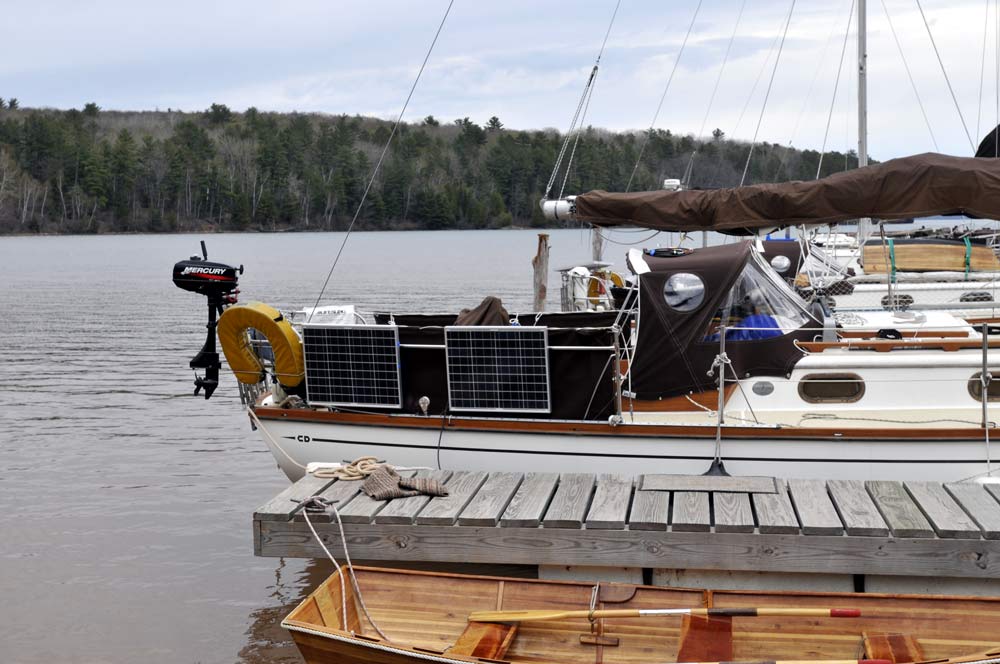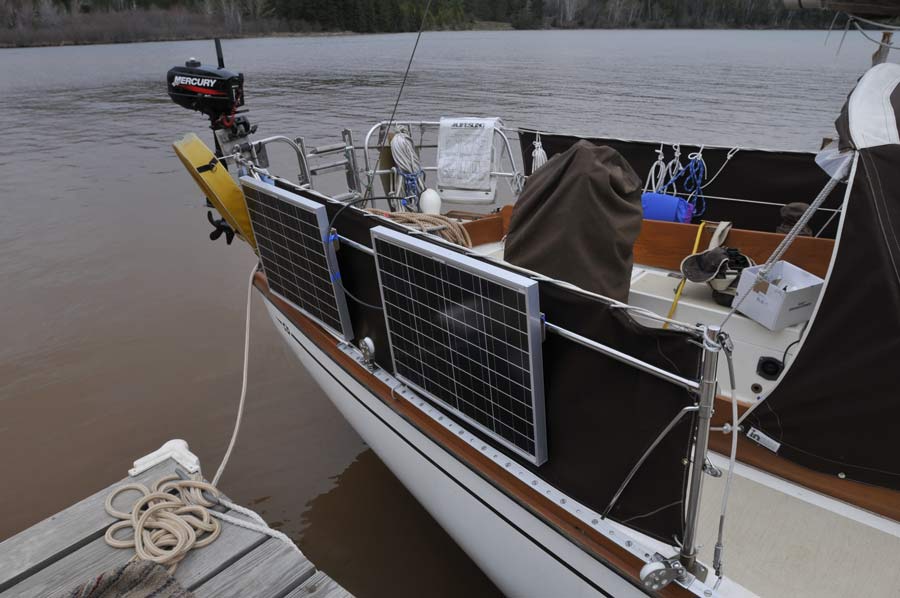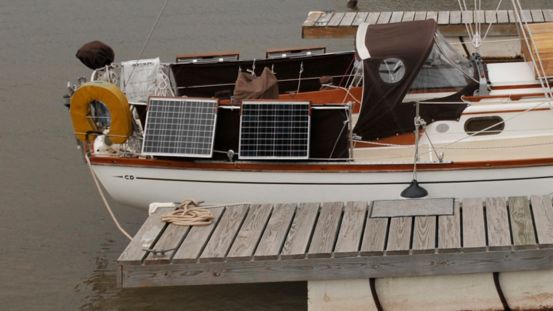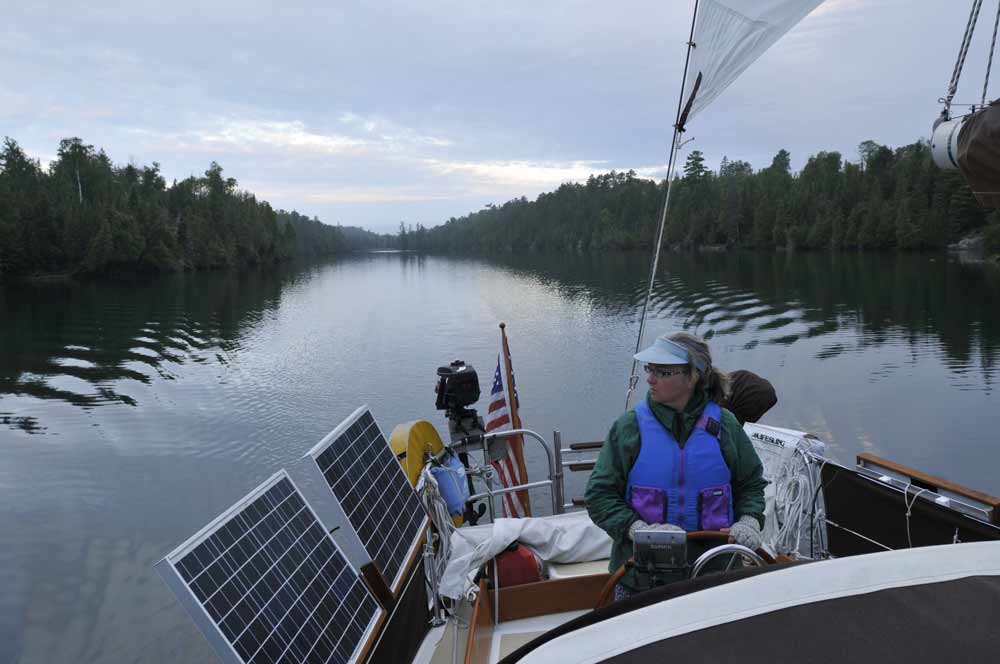I mounted them on a rail and use a friction brake to hold them in position so given enough pressure the panels will move.
The Yankee sheets run just below the bottom of the panels along the rail. I keep the sheets leading car block just ahead of the forward panel and the second block between the two panels. The sheet then runs back to a turning block at the aft end of the cock pit and then forward to the winch. The panels are outside the plane of the safety lines but the bottoms can be tilted in side the toe rail and out of the way of the cars if I want to pull the sheet in point farther back which I rarely do. I have a weather cloth that effectively blocks the industrial looking back of the panels. Only the top edges peak out above the weather cloths.

Since these photos were taken, I have raised the rail to the top of the posts and raised the friction brakes on the panels. This allows a greater pivot point and doesn't get in the way of the weather cloth as much but keeping the panel in the same place relative to the deck and rail.

As far a the winch handles, you can hit them only if they are in a certain position and only with your hand. My standard Lewmar winch handle spins all the way around. I am trying to think how I adjusted to this but can't, we adjusted and it really is not a problem.
When we are hard over with the rail buried, the panels are still out of the water. If they get wet it is because we are heeled over far enough to fill the cockpit with water, something I try to avoid. I am not sure what sea water will do to these units but they are aluminum frames with sealed glass and weather tight junction boxes for the wiring. They are built to be outside in the weather.
The biggest trouble is when we fly the Gennaker and the sheets get caught underneath the panels. To solve that, you need to either fold them in completely or tilt them up inward to catch the sun.
All in all, I find it to be a very good set up. We sat at anchor for five days and nights last summer and and never had to run the engine, made ice and even ran the vacuum off the inverter. And the really nice thing about this set up is that it all comes off and the boat could be returned to a regular, non solar cell encrusted craft when I get to install the fuel cell generator that runs off the gas from the holding tank.
Not any time soon, but there you are.
Always happy to to answer any questions about the set up.





